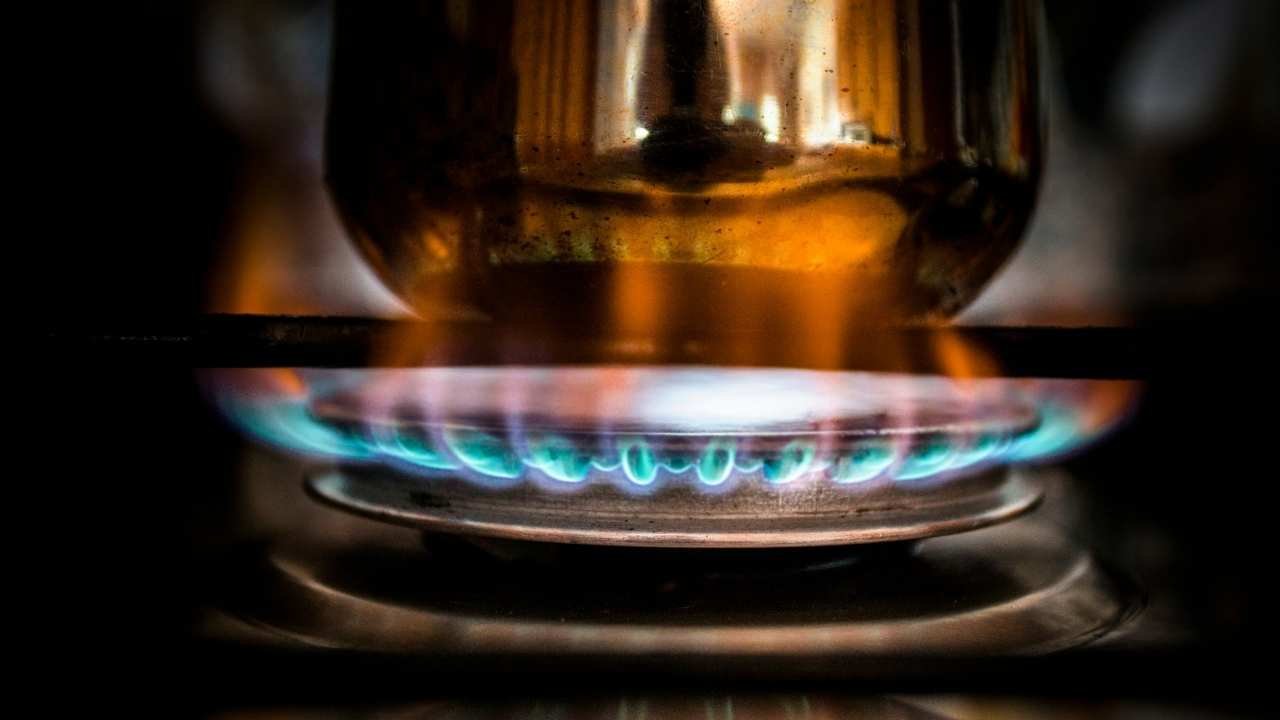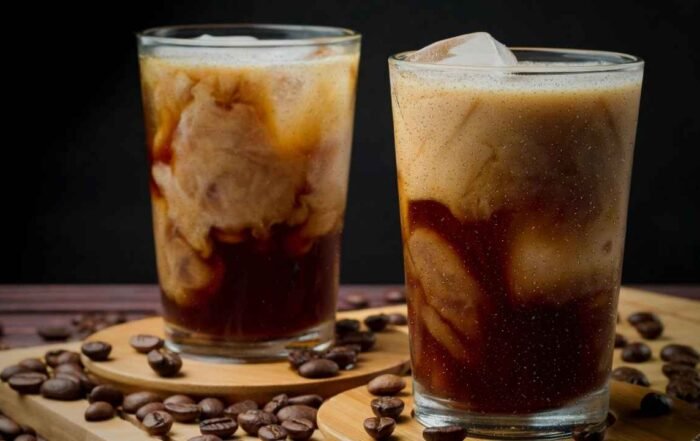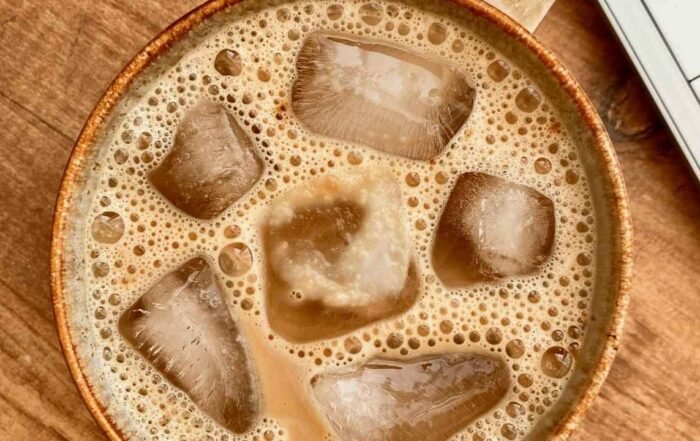In this Article
- Brewing Coffee the Traditional Way
- Why Choose Stove Brewing Over Electric Coffee Makers?
- Essential Tools and Ingredients for Stove Coffee
- How to Brew Coffee on the Stove: Step-by-Step Guide
- Brewing with a Stovetop Percolator
- Brewing with a Moka Pot (Stovetop Espresso Maker)
- Common Mistakes to Avoid When Making Coffee on the Stove
- Get The Coffee Makers Here
- Final Thoughts: Bringing Back the Classic Stove Coffee Ritual
- Frequently Asked Questions
- Leave A Comment Cancel reply
- Related Posts
- Sign up to the newsletter

Brewing Coffee the Traditional Way
Returning to fundamentals is profoundly fulfilling in our fast-paced digital world of 2025. Though pod machines and elegant espresso makers rule kitchen counters, stovetop coffee brewing is still a favorite habit for coffee aficionados all around.
The aroma filling your kitchen, the soft bubbling noises, and that first sip of exquisitely brewed coffee create an experience no electric machine can duplicate. Yes, then, “can you make coffee on the stove?” Certainly! This classic technique links us to generations of coffee lovers who perfected this craft while providing amazing taste.
Why Choose Stove Brewing Over Electric Coffee Makers?
The Flavor Advantage
Stovetop brewing extracts oils and compounds that electric drip makers often miss. The slow, regular warmth produces strong, full-bodied coffee with great depth. Each cup is a real culinary trip as you will taste flavors and subtleties that are missed in automatic brewing methods.
The Simplicity and Control
No electricity required implies your coffee routine never stops, whether camping or in a blackout. You determine every factor: water temperature, brewing duration, and extraction power. Moreover, with correct maintenance, stovetop tools cost significantly less than their electric counterparts and survive for decades.
Essential Tools and Ingredients for Stove Coffee
Coffee Beans and Grind Size
Select good, fresh beans for best results. While moka pots need fine-medium consistency, percolators benefit from medium- coarse grind. When at all practical, stay away from pre-ground coffee; freshly ground beans provide all the difference in flavor extraction and aroma.
Water, Heat, and Equipment
Begin with filtered water to produce clean-tasting coffee. Stovetop percolators and Moka pots are your primary choices, each yielding different coffee flavors. Medium heat levels will help to avoid searing. A timer assists in monitoring the brewing time. Keep your equipment clean between uses to preserve pure flavors and avoid bitter residue buildup.
How to Brew Coffee on the Stove: Step-by-Step Guide
| Coffee Strength | Coffee to Water Ratio | Example Measurement |
| Mild | 1:17 | 1 tbsp per 8 oz water |
| Medium | 1:15 | 2 tbsp per 6 oz water |
| Strong | 1:12 | 2.5 tbsp per 6 oz water |
Measuring Coffee and Water
One portion coffee to fifteen portions water roughly equals the golden ratio of 1:15. To get stronger coffee, set to 1:12. Start with two tablespoons of ground coffee per six ounces of water, then adjust based on taste preferences. Regular measures guarantee consistent outcomes every time.
Heating and Brewing Process
Set your brewing equipment at medium heat and wait patiently. Rushing with great heat produces harsh, scorched tastes. Look out for soft gurgling or percolating noises; they denote effective extraction. The slow warming lets water completely absorb coffee oils and tastes, producing that rich flavor we desire from stove-top brewing.
How Long to Perk Coffee on the Stove
Most stovetop coffee takes 7–10 minutes overall brewing time. Moka pots finish in 5–7 minutes; percolators need about 8–10 minutes of mild bubbling. Over-brewing yields strong, bitter coffee; so, timing is important. To properly assess success, pay attention for variations in bubbling noises and check the coffee color through clear percolator covers.

| Brewing Method | Total Time | Key Indicators |
| Percolator | 8-10 minutes | Gentle bubbling, coffee color darkening |
| Moka Pot | 5-7 minutes | Gurgling sound, coffee flowing to top |
| French Press (stovetop heated) | 4 minutes steep | Timer after water reaches temperature |
Brewing with a Stovetop Percolator
How to Make Coffee in a Stovetop Percolator
- Fill the percolator with cold water up to the desired level
- Insert the metal stem and basket assembly
- Add coarse-ground coffee to the basket (don’t pack it down)
- Place the lid securely and set on medium heat
- Wait for percolation to begin (water bubbling up through the stem)
- Let it perk for 8-10 minutes, adjusting heat as needed
- Remove from heat and let settle for a minute before serving
How to Percolate Coffee on the Stove for Best Results
Monitor the boiling intensity closely; every time gentle, steady percolation beats strong boiling. Lower the temperature right away if bubbling becomes too strong. Each pass the coffee should darken as it cycles several times through the grounds. Lifting the top often releases heat and interrupts the brewing process; thus, try to avoid it. View through the glass knob, if available, to assess coffee color and intensity.
Brewing with a Moka Pot (Stovetop Espresso Maker)
How to Cook Coffee on the Stove Using a Moka Pot
- Fill the bottom chamber with water just below the safety valve
- Insert the metal filter basket into the bottom chamber
- Add finely-ground coffee to the basket, leveling without pressing down
- Screw the top and bottom chambers together firmly
- Place on medium-low heat with the lid open initially
- When coffee starts flowing into the upper chamber, close the lid
- Remove from heat when you hear a gurgling sound
- Serve immediately for best flavor
Tips for Rich Stovetop Espresso
Too fine coffee clogs the filter; too coarse reduces extraction. Use freshly ground coffee with a fine-medium texture. Maintain low heat to avoid metallic flavors from being overheated. Preheating water accelerates brewing and lessens metallic flavour. Listen for the characteristic gurgling that indicates brewing conclusion. Leave the moka pot off heat after brewing ends because this produces burned, unappealing tastes.
Common Mistakes to Avoid When Making Coffee on the Stove
- Overheating: Use medium heat only; high heat burns coffee and creates bitter flavors
- Wrong grind size: Too fine clogs filters, too coarse makes weak coffee
- Overfilling water: Dilutes strength and disrupts proper brewing flow
- Dirty equipment: Clean regularly and replace worn parts for best taste

Get The Coffee Makers Here
Final Thoughts: Bringing Back the Classic Stove Coffee Ritual
Unmatched control, great flavor, and actual enjoyment in our robotic society are provided by stovetop coffee brewing. Whether using a percolator or a moka pot, this traditional technique connects us to coffee’s rich history while also providing better flavor. With some practice, you will master these methods and wonder why you ever relied on electric devices; don’t let the learning curve intimidate you.
Frequently Asked Questions
Can I use regular ground coffee from the store for stovetop brewing?
Yes, but choose medium-coarse grind for percolators and fine-medium for moka pots. Fresh grinding always produces better results than pre-ground coffee.
How do I know when my stovetop coffee is ready?
Listen for bubbling sounds in percolators (8-10 minutes) or gurgling in moka pots (5-7 minutes). The coffee color will also darken as brewing progresses.
Why does my stovetop coffee taste bitter?
Usually from overheating, over-extraction, or using too fine a grind. Try lower heat, shorter brewing time, or coarser coffee grounds to fix the problem.









